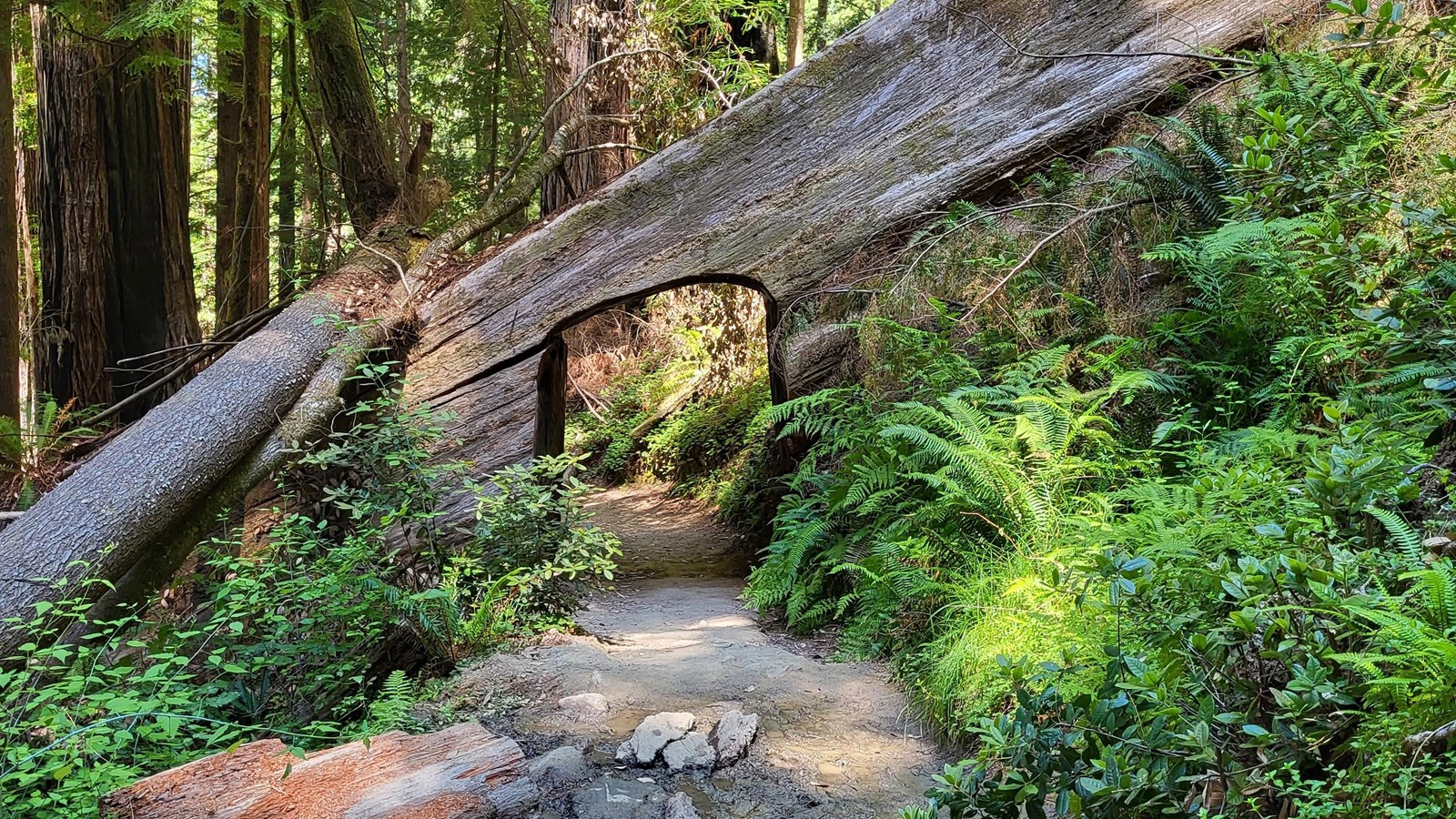Last updated: May 7, 2024
Place
Tall Trees Walking Tour Stop 4

NPS Photo
Succession
Welcome to the “Tunnel Tree!” As you continue your journey through the wheels of time, try counting the growth rings where this tree was hollowed out. Here time is measured by the seasonal growth of a forest giant. It’s old! What was happening in human history when this tree was just a sprout?
The different trees around you have different record lifespans: red alder <100 years; tanoak <400; Douglas fir <1,000; coast redwoods can live up to 2,530 years! When a forest is cleared by fire or treefall, different species of trees may dominate the landscape at different times. Alders are often called the Band-Aid of the forest, as they are the first to quickly fill a void. Tanoaks and Douglas firs eventually surpass the heights of alders, replacing them as they die from old age or lack of sun. Eventually redwoods will outgrow all the other trees and become the dominant tree or “climax species.” This succession of trees can take centuries!
The giant logs you see around you might remain a part of the natural scenery for years to come. The tannic acid stored in redwoods make the wood rot resistant by warding off the effects of insects, fungi, and bacteria. Our largest redwood logs can take up to 800 years to completely decompose! Compare that to the rate of decay of a leaf or an animal… Wheels within wheels in the perception of time...
Your next stop is a bit further down the trail. As you marvel at the variable green tapestry above you, don’t forget to watch the ground at your feet. Look out for salamanders, boreal toads, banana slugs and Pacific side-band snails crossing the trails. Consider the ground itself, for the geology of this area is an important factor in its make-up.
